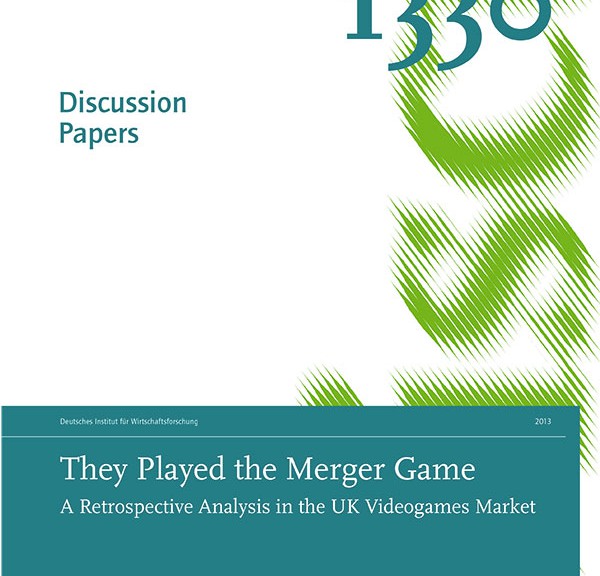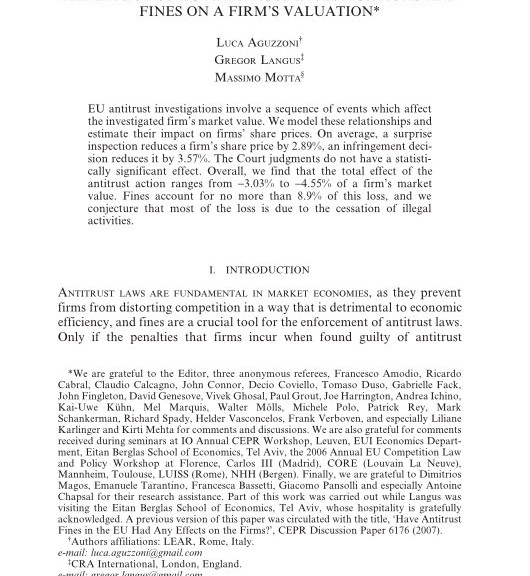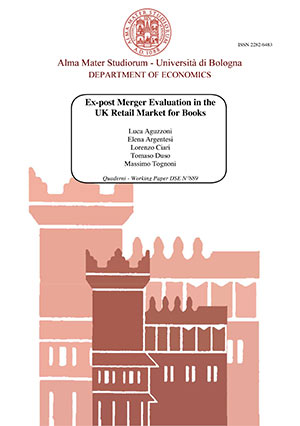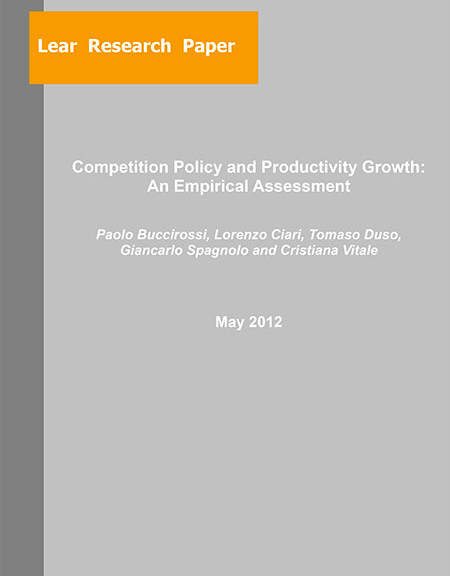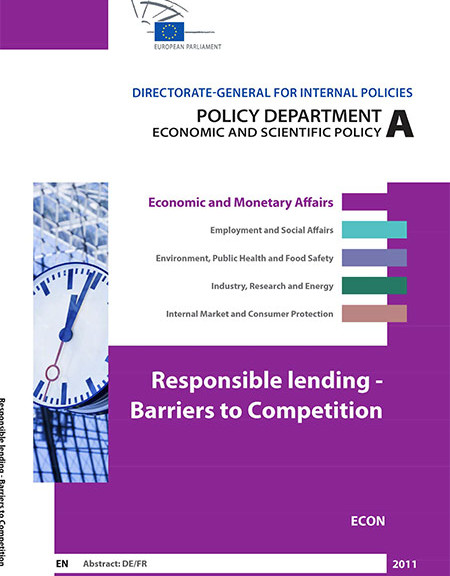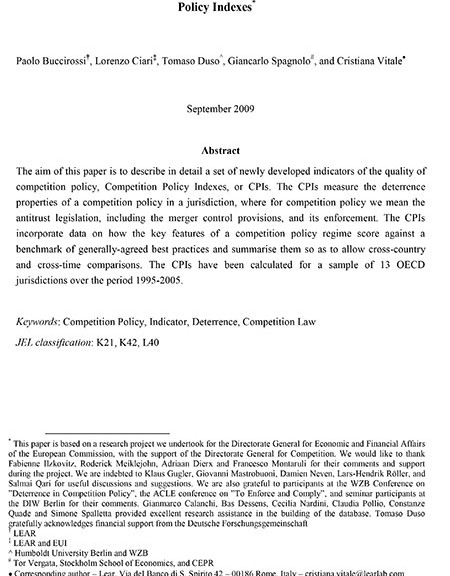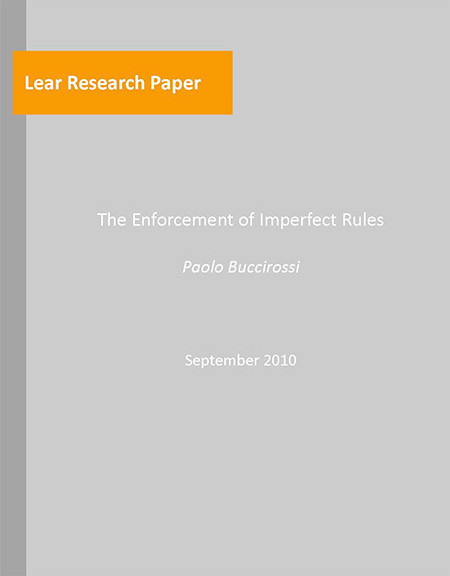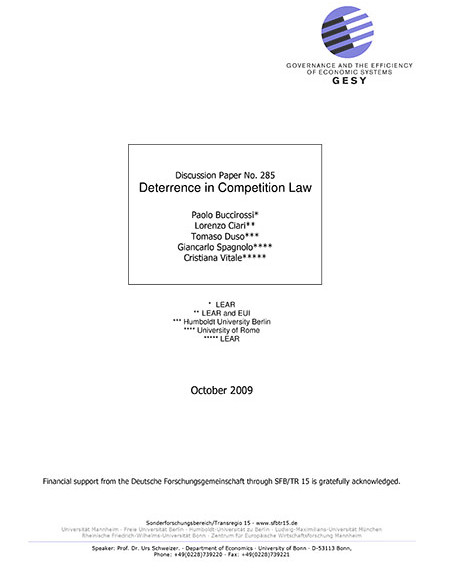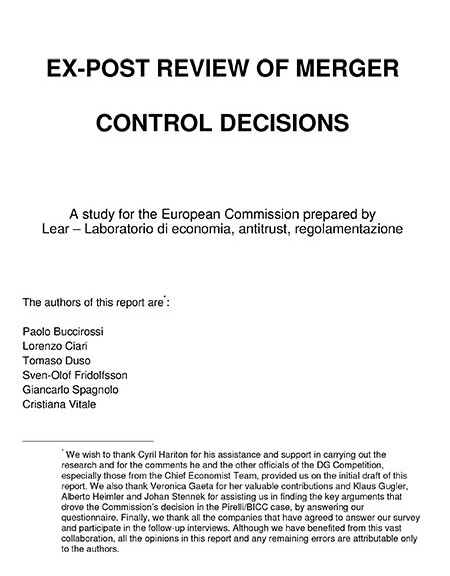We study the effect of a merger in a dynamic high-technology industry — the videogame market — which is characterized by frequent introduction of new products. To assess the impact of the merger between two large specialist retailers in the UK, we perform a difference-in-differences analysis comparing the price evolution of the merging parties to that of their 7 major competitors on an original sample of 196 videogames belonging to six different consoles. The results of our econometric analyses suggest that there has been a reduction in the general level of prices of both new and pre-owned games after the merger. This decline has been more marked for the merging parties, which suggests that the merger between Game and Gamestation did not lead to a substantial lessening of competition; rather it is consistent with the existence of efficiency gains.
Archives
The Effect of EU Antitrust Investigations and Fines on a Firm’s Valuation
EU antitrust investigations involve a sequence of events which affect the investigated firm’s market value. We model these relationships and estimate their impact on firms’ share prices. On average, a surprise inspection reduces a firm’s share price by 2.89%, an infringement decision reduces it by 3.57%. The Court judgments do not have a statistically significant effect. Overall, we find that the total effect of the antitrust action ranges from -3.03% to -4.55% of a firm’s market value. Fines account for no more than 8.9% of this loss, and we conjecture that most of the loss is due to the cessation of illegal activities.
Ex-Post Merger Evaluation in the UK Retail Market for Books
This paper empirically evaluates the price effects of the merger of two major book retail chains in the UK: Waterstone’s and Ottakar’s. We employ differences-in-differences techniques and use a rich dataset containing monthly scanner data information on a sample of 200 books sold in 60 stores in 50 different local markets for a period of four years around the merger. Since retail mergers may have either local or national effects (or both) according to the level at which retail chains set prices, we undertake an ex-post assessment of the impact of the merger at both levels. At the local level, we compare the changes in the average price charged before and after the merger in the shops located in overlap areas – i.e. areas where both chains were present before the merger – and in non-overlap areas – i.e. areas where only one chain was present before the merger. At the national level, we employ two distinct control groups to evaluate the merger, namely the competitors and the top-selling titles. We find that the merger did not result in an increase in prices either at the local or at the national level. We also perform heterogeneous treatment effects estimations in order to assess whether the effect of the merger differs along various dimensions of heterogeneity that are present in our data.
Can ‘Fair’ Prices Be Unfair? A Review of Price Relationship Agreements
The report, prepared for the OFT by LEAR, examines the various forms these agreements can take, their potential benefits and anti-competitive effects, drawing on economic literature and relevant case law. The OFT will present the findings today at a joint workshop held by the US Federal Trade Commission and Department of Justice on the implications for antitrust policy and enforcement of ‘most-favoured nation’ (MFN) clauses, which are a type of price relationship agreement.
The report suggests that while some types of price relationship agreements could be attractive to buyers, they could also have a softening effect on competition. For example, shoppers offered a ‘lowest price’ guarantee may not bother to shop around as much as they would otherwise, thus reducing the downward pressure on prices. Furthermore, if a rival of a ‘lowest price’ retailer knows that any price reduction will quickly be matched or beaten, the incentive to lower prices may be reduced.
Competition policy and productivity growth: an empirical assessment
This paper empirically investigates the effectiveness of Competition Policy by estimatingits impact on Total Factor Productivity (TFP) growth for 22 industries in 12 OECD countries over the period 1995-2005. Using country-industry and time fixed effects, and controlling for most other determinants of productivity growth, we find a robust positiveand significant effect of competition policy as measured by newly created indexes on TFPgrowth. We provide several arguments and results based on instrumental variables estimators as well as non-linearities, to support the claim that the established link can be interpret in a causal way. At a disaggregated level, the effect on TFP growth is particularly strong for specific aspects of competition policy related to its institutional set up and antitrust activities(rather than merger control). The effect is further strengthened by a low cost of contract enforcement, suggesting institutional complementarities between competition policy and the efficiency of law enforcement institutions.
Responsible Lending – Barriers to Competition
This study analyses the main barriers to effective competition in the provision of mortgage credit. The study considers and discusses barriers affecting both the supply (distance, information sharing, cross-selling practices, linkages between mortgage lenders and other market players) and the demand (switching and search costs) side of the market. Based on the available evidence it provides an assessment of the extent to which such barriers restrict competition in the mortgage market.
Study commissioned by the European Parliament
Measuring the deterrence properties of competition policy: the competition policy indexes
This article describes in detail a set of newly developed indicators of the quality of competition policy, the Competition Policy Indexes (CPIs). The CPIs measure the deterrence properties of a jurisdiction’s competition policy—where by competition policy, we mean the antitrust legislation including the merger control provisions and its enforcement. The CPIs incorporate data on how the key features of a competition policy regime (particularly information on the legal framework, the institutional settings, and the enforcement tools of each jurisdiction that we examine) score against a benchmark of generally agreed-upon best practices and summarize them, so as to allow cross-country and cross-time comparisons. We calculate the CPIs for a sample of 13 OECD jurisdictions over the period from 1995 to 2005.
Forthcoming in the Journal of Competition Law & Economics (working version downloadable)
The Enforcement of Imperfect Rules
This paper examines the optimal sanction for rules that are imperfect in that they are either overinclusive, as they prohibit an action that in some circumstances is beneficial, or underinclusive as they allow agents to undertake alternative conducts that are harmful, or both. The paper clarifies why this notion of imperfection divers from the notion of over- and underdeterrence and from that of legal errors. Finally it shows that when rules are imperfect the optimal sanction is lower than the optimal sanction for a perfect rule, both if the rule is overinclusive and if it is underinclusive.
Deterrence in Competition Law
This paper provides a comprehensive discussion of the deterrence properties of a competition policy regime. On the basis of the economic theory of law enforcement we identify several factors that are likely to affect its degree of deterrence: 1) sanctions and damages; 2) financial and human resources; 3) powers during the investigation; 4) quality of the law; 5) separation of power. We then discuss how to measure deterrence. We review independence and 6) the literature that uses surveys to solicit direct information on changes in the behavior of firms due to the threats posed by the enforcement of antitrust rules, and the literature based on the analysis of hard data. We finally argue that the most challenging task, both theoretically and empirically, is how to distinguish between “good” deterrence and “bad” deterrence.
Gesy- Discussion Paper n.285
Ex post review of merger control decisions
In this study prepared for the European Commission Lear proposes a methodology for the ex-post assessment of merger control decisions. The aim of the methodology is to establish whether the market structure arising from the decision protects social welfare better than the market structures that could have arisen from alternative decisions. The methodology also assesses whether the underlying economic analysis is correct and complete. The study then applies the proposed approach to the EU decision on the Pirelli and BICC merger.
Published by the European Commission (February 2007)

